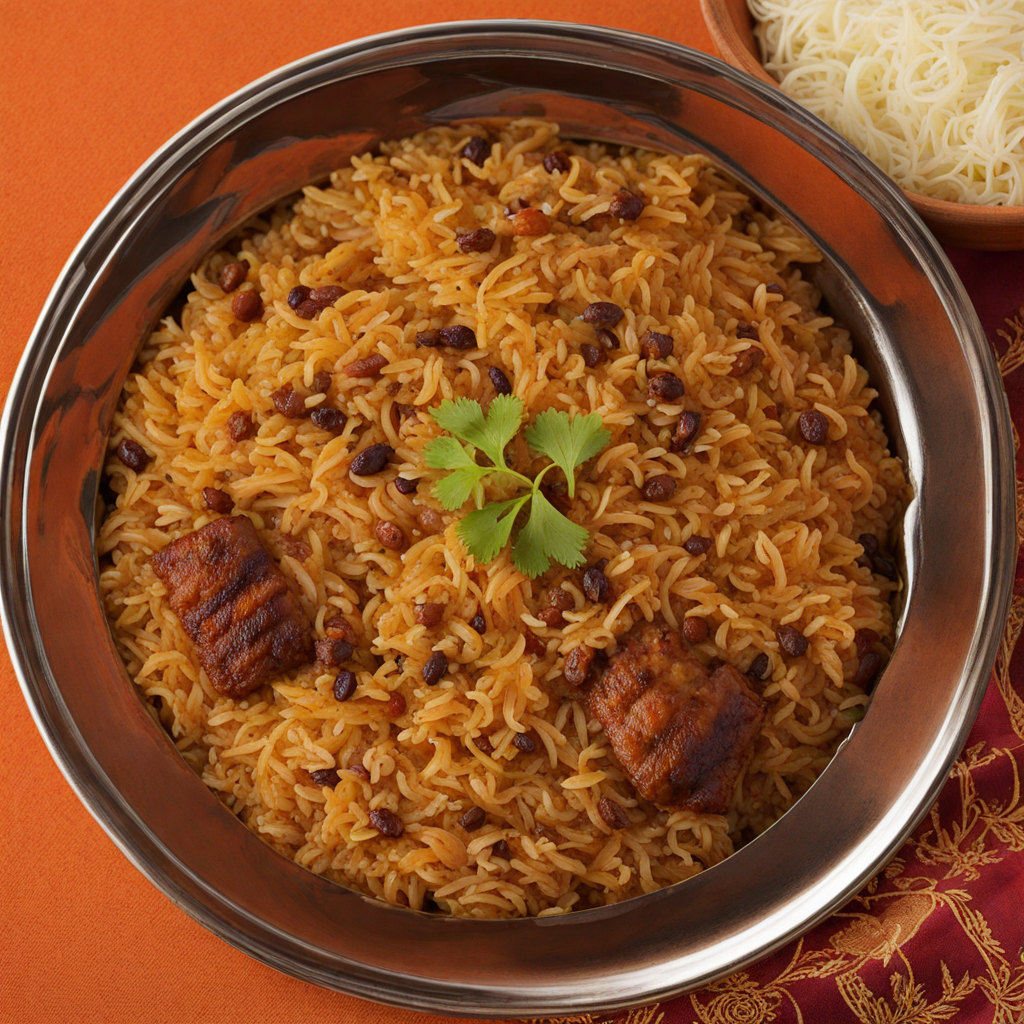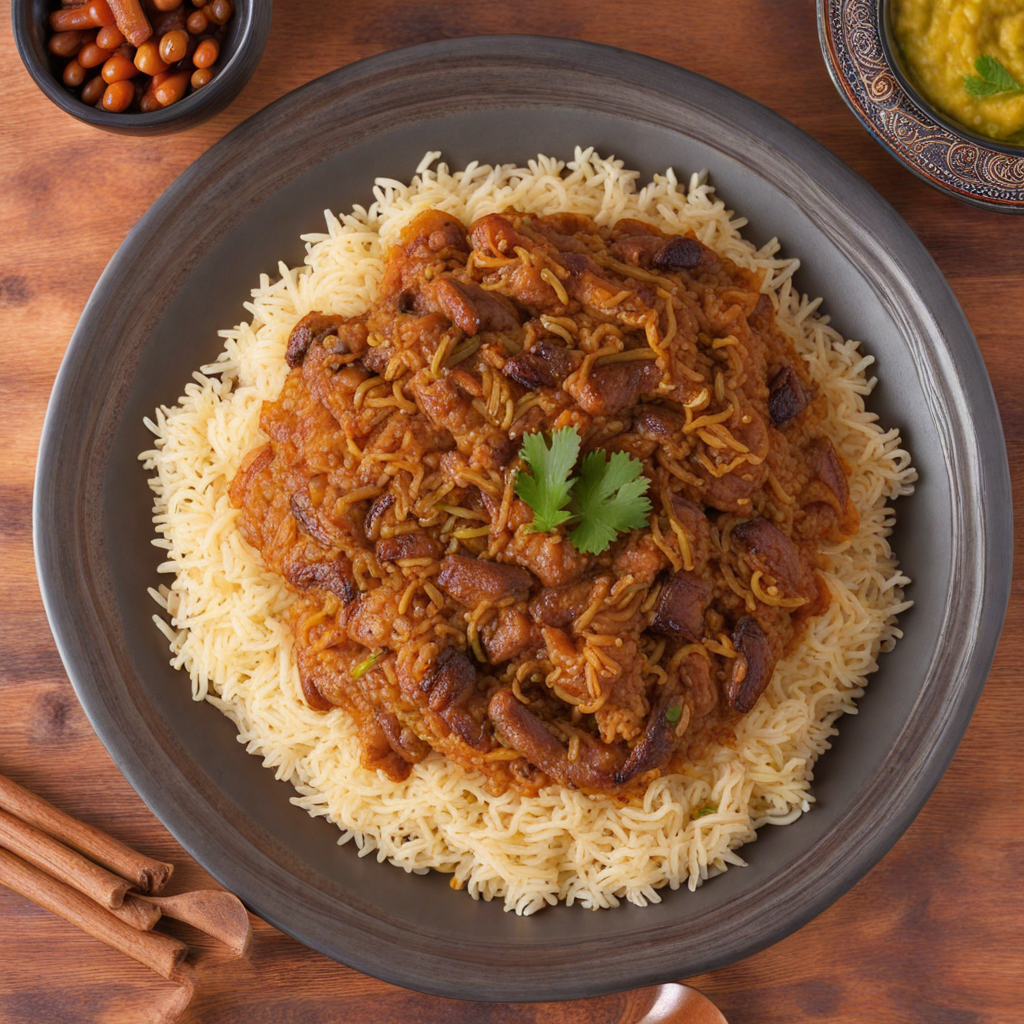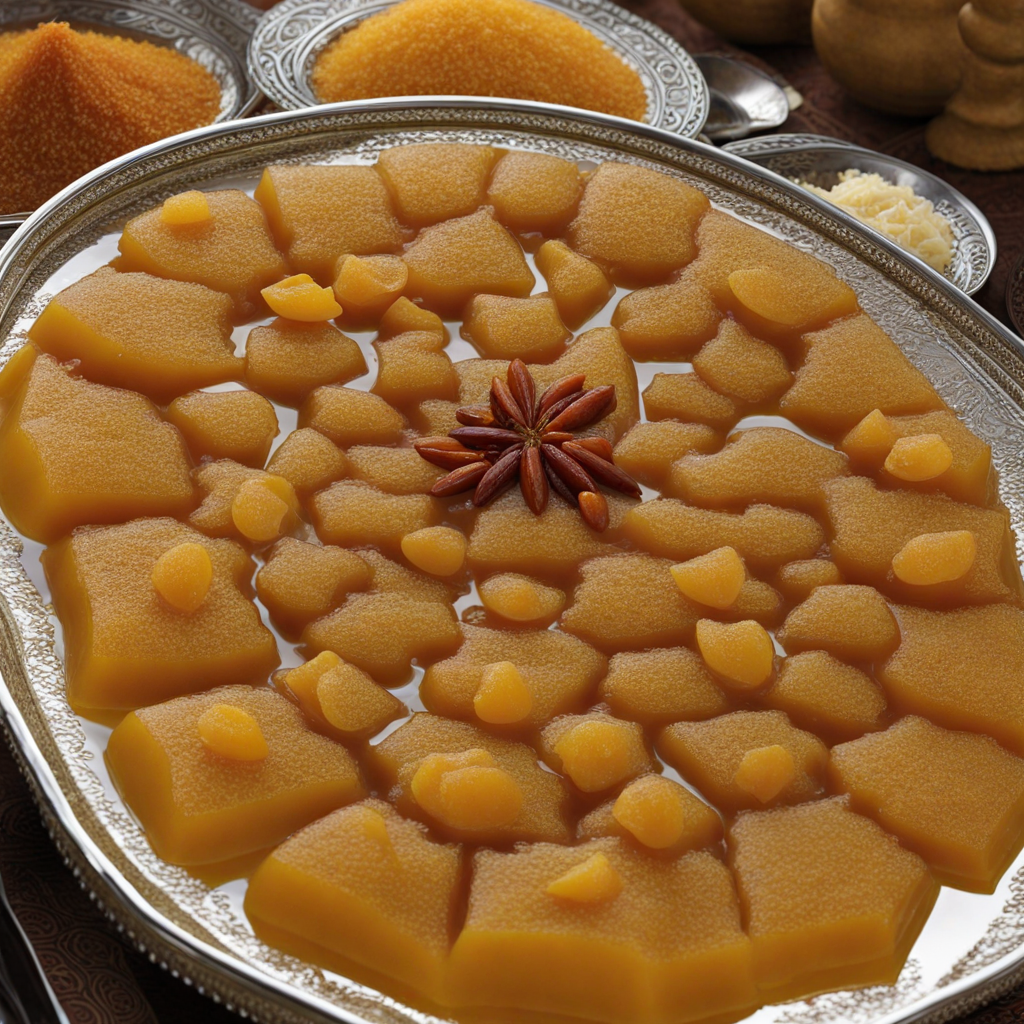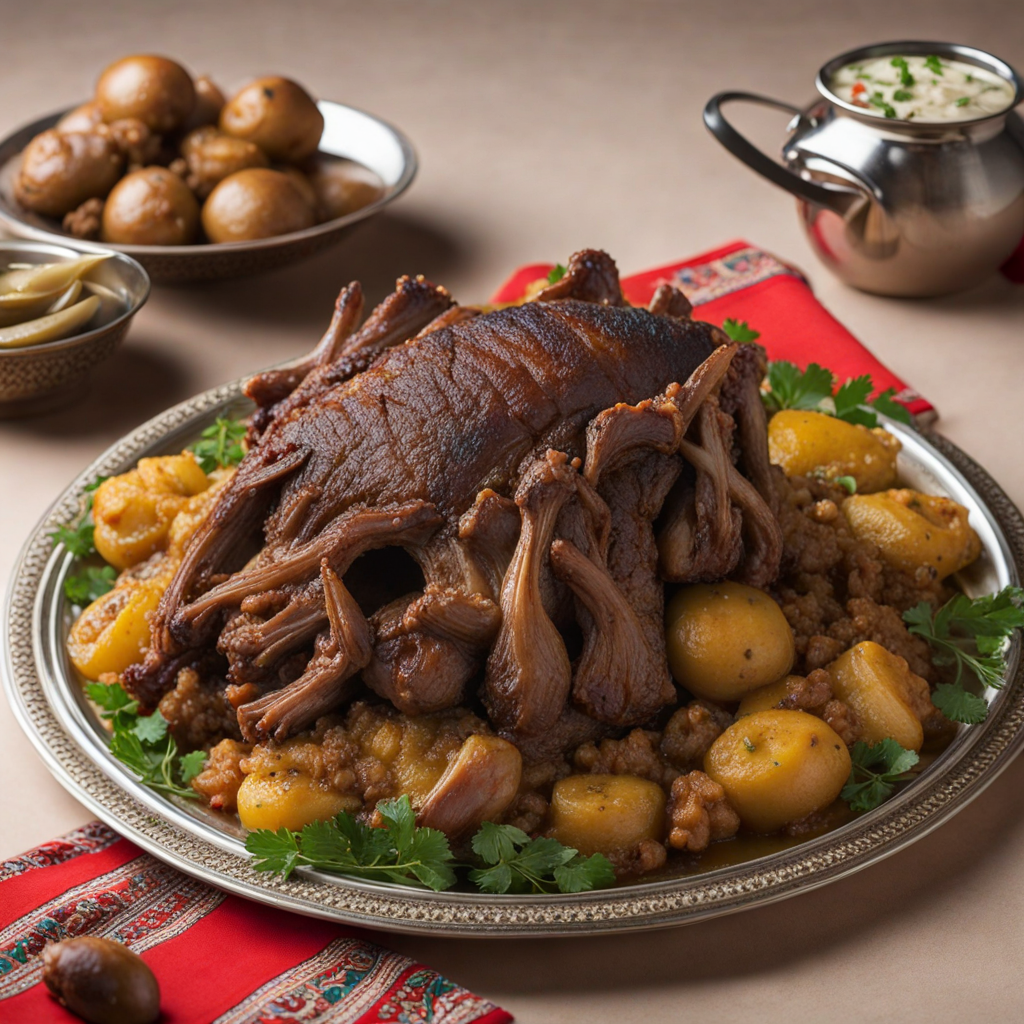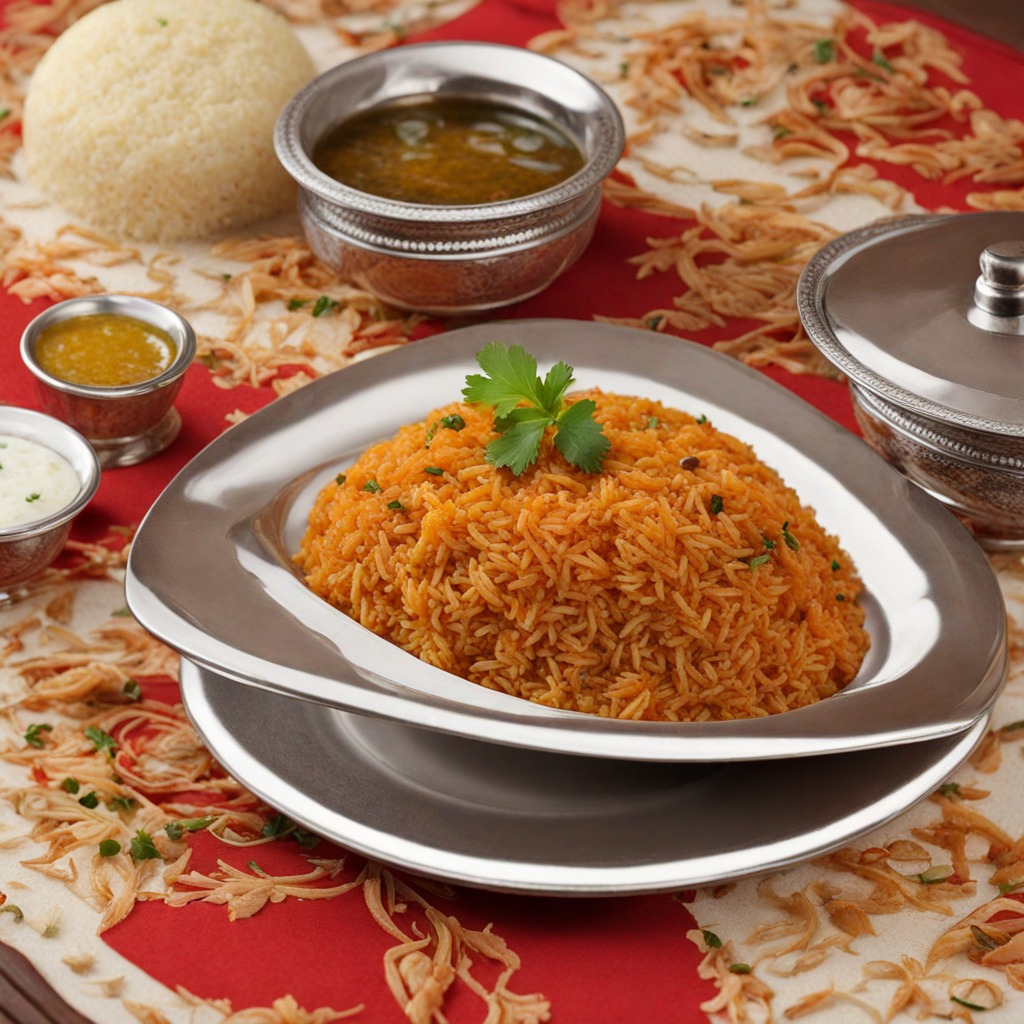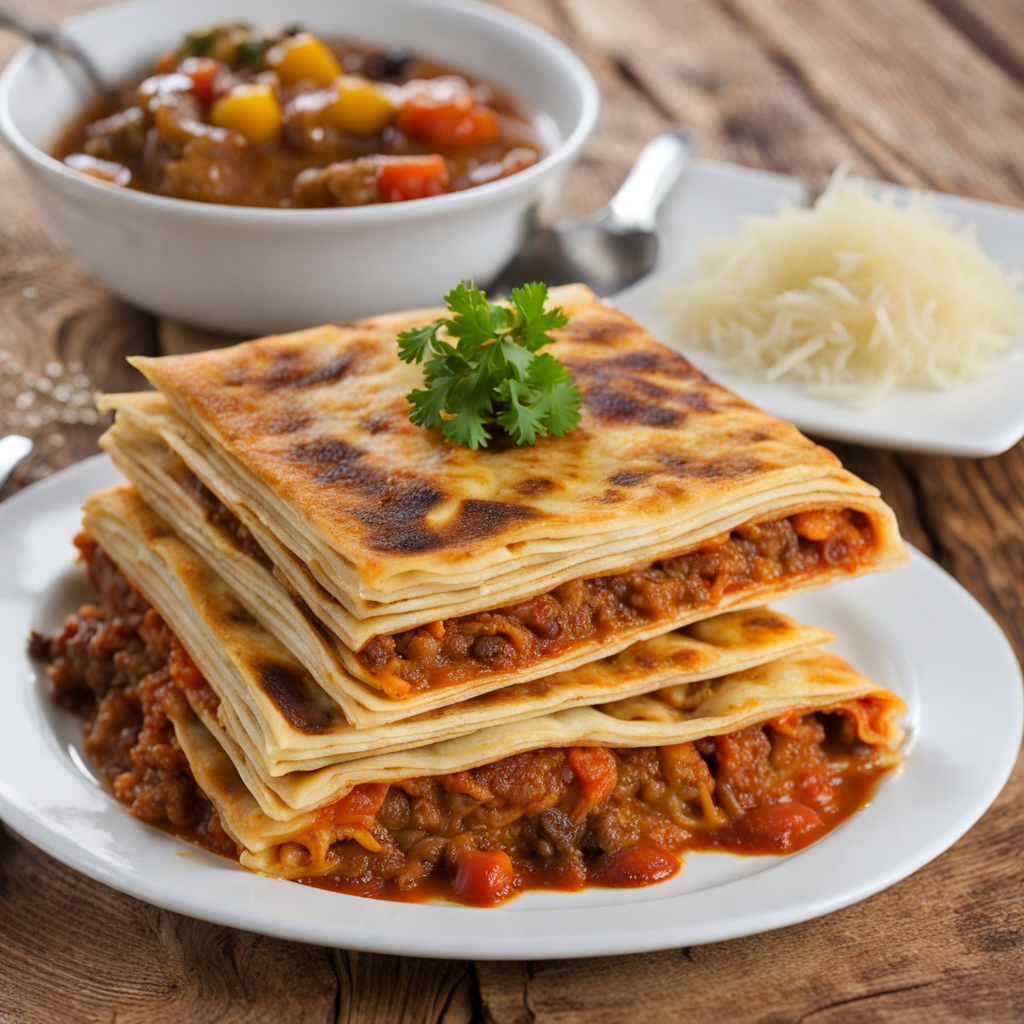Makbous
Makbous is a traditional Omani dish that beautifully embodies the rich flavors and culinary heritage of Oman. This aromatic rice dish is often regarded as a cornerstone of Omani cuisine, typically made with fragrant basmati rice, tender pieces of marinated meat—such as chicken, lamb, or goat—and an array of vibrant spices. The meat is usually cooked to perfection, allowing it to absorb the spices and flavorings, which may include saffron, turmeric, and cardamom, creating a delightful taste experience that is both warming and exotic. What sets Makbous apart is its unique cooking method, where the rice is cooked in a savory broth that is infused with the essence of the spices used for the meat. The dish often features added ingredients such as raisins, nuts, or vegetables, enhancing the texture and adding layers of flavor. The result is a visually stunning dish, with the golden-hued rice beautifully arranged around the succulent meat, often garnished with fresh herbs or fried onions for an added touch of elegance. Served traditionally during special occasions or family gatherings, Makbous is more than just a meal; it is a celebration of culture and hospitality. The communal nature of sharing this dish fosters a sense of togetherness, making every bite a part of a cherished experience. As you explore Makbous, you will discover a delightful harmony of flavors that reflects the warmth and richness of Omani culinary traditions, making it a must-try for any adventurous food lover.
How It Became This Dish
The History of مكبوس (Maqbus) in Oman Origin and Etymology Maqbus, a beloved dish in Oman and the broader Gulf region, is a fragrant rice dish traditionally made with basmati rice, meat (often chicken, lamb, or fish), and an array of spices. The etymology of the word "maqbus" can be traced back to the Arabic root "q-b-s," which means to "press" or "squeeze." This reflects the cooking method, where rice is often cooked in a spiced broth and then pressed together with the meat, allowing the flavors to meld beautifully. The origins of maqbus are complex and multifaceted, rooted deeply in the intermingling of Omani, Arabian, and broader Middle Eastern culinary traditions. It is believed to have evolved from earlier rice dishes brought to the region by traders and travelers, particularly during the age of the Silk Road and maritime trade routes. The use of rice in Oman can be traced back over a thousand years, as the region’s climate and geography lent themselves well to the cultivation of this essential grain. Cultural Significance Maqbus is more than just a dish; it is a symbol of Omani hospitality and a centerpiece of family gatherings and celebrations. In Oman, food plays a vital role in social interactions, and maqbus is often served during significant events such as weddings, religious holidays, and communal feasts. The dish is emblematic of the values of generosity and community, as it is typically prepared in large quantities to accommodate guests. The preparation and sharing of maqbus also reflect the deep-rooted traditions of Omani culture. Meals are often communal, eaten from a large shared platter, promoting a sense of togetherness. This practice is rooted in the Islamic principle of sharing food as a form of charity, reinforcing social bonds and fostering community spirit. Additionally, maqbus is often served with a variety of side dishes, such as salads, pickles, and sauces, enhancing the communal dining experience. In Omani households, the making of maqbus is often a ritual that brings families together. It is common for recipes to be passed down through generations, with each family adding their unique twist to the dish while maintaining traditional preparation methods. The use of local spices, such as saffron, cardamom, and black lime, adds distinctive flavors to the dish, reflecting Oman’s rich agricultural resources and the influence of trade. Development Over Time Historically, Oman’s position as a trading hub has significantly influenced its culinary landscape. The spice trade, in particular, played a crucial role in shaping the flavors of maqbus. As traders from distant lands brought spices like cinnamon, turmeric, and cloves, Omani cooks began to incorporate these vibrant flavors into their rice dishes. Over time, maqbus evolved into a dish that not only satisfied hunger but also showcased the country’s rich culinary heritage. In the 20th century, the discovery of oil transformed Oman’s economy and society. With increased wealth and globalization, culinary practices began to adapt and incorporate more modern techniques and ingredients. While traditional maqbus remained a staple, new variations emerged, reflecting the evolving tastes of both locals and expatriates. Fast-food culture also began to influence the dining landscape, yet maqbus retained its status as a comfort food, often prepared for family gatherings and special occasions. The rise of tourism in Oman during the late 20th and early 21st centuries introduced maqbus to a global audience. Visitors seeking authentic Omani experiences often seek out local restaurants and street vendors to sample traditional dishes. This exposure has led to a renewed appreciation for maqbus, with chefs experimenting with innovative presentations while honoring the dish's roots. In contemporary Oman, maqbus continues to thrive as a beloved dish, both in homes and restaurants. It has become a culinary ambassador, representing Omani culture and heritage to the world. Cooking shows, culinary festivals, and social media have played a significant role in popularizing maqbus beyond the borders of Oman, allowing food enthusiasts to explore its rich history and flavors. Variations and Modern Interpretations While the traditional maqbus recipe remains popular, a plethora of variations have emerged, reflecting regional preferences and the creativity of contemporary chefs. Some variations incorporate seafood, particularly in coastal regions where fresh fish is abundant. Others may feature vegetarian options, using seasonal vegetables and legumes to create a fulfilling dish without meat. The choice of spices can also vary widely, with some cooks opting for a more subtle flavor profile, while others embrace a bolder, spicier approach. Modern interpretations of maqbus often emphasize presentation, transforming the dish into a visual feast. Chefs may layer the rice and meat in a more artistic manner, garnishing it with nuts, raisins, or fresh herbs to create a striking centerpiece for a dining table. This blend of traditional and contemporary styles reflects the dynamic nature of Omani cuisine, where heritage meets innovation. Conclusion Maqbus, with its deep-rooted history and cultural significance, stands as a testament to Oman’s rich culinary heritage. From its origins in ancient trade routes to its role in modern Omani hospitality, maqbus embodies the spirit of community and the joy of sharing food. As it continues to evolve and adapt, this cherished dish serves as a delicious reminder of the interconnectedness of cultures and the timeless appeal of home-cooked meals. Whether enjoyed at a family gathering or a festive celebration, maqbus remains a beloved staple, uniting generations and fostering a sense of belonging in every bite.
You may like
Discover local flavors from Oman


